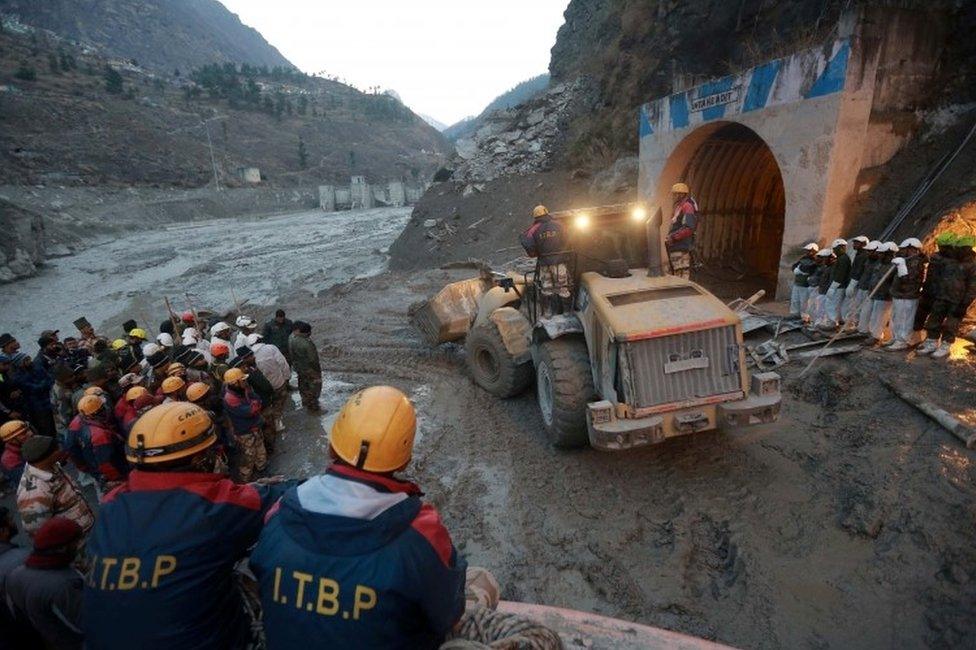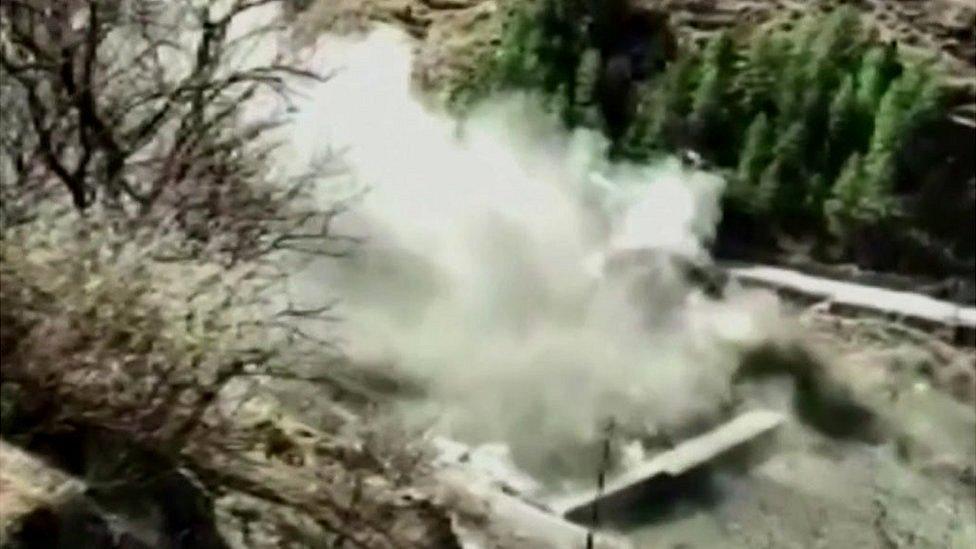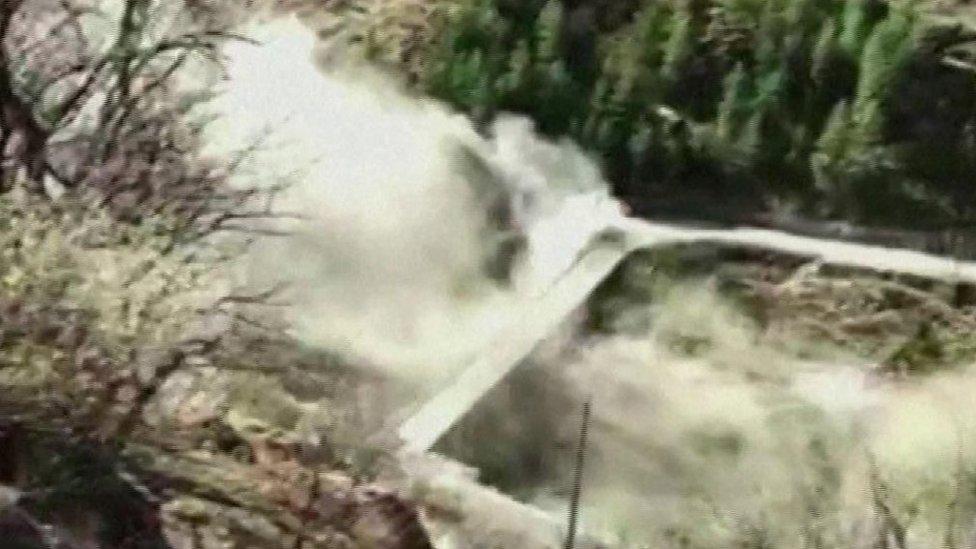Uttarakhand dam disaster: Race to save people trapped inside India tunnel
- Published

Up to 35 people are believed to be trapped in the tunnel
Emergency teams are working round the clock to rescue up to 35 people believed to be trapped in a tunnel in northern India.
The tunnel was blocked after a huge flood in the state of Uttarakhand on Sunday in which 28 people have been killed, and as many as 150 are missing.
A piece of a Himalayan glacier is believed to have fallen into a river and triggered the deluge.
The main rescue effort is focused on an 8.3km (5.1-mile) long tunnel.
It is one of two tunnels connected to the Tapovan Vishnugad hydro power project and is meant to transport water. The other 3.8km long tunnel is to flush silt from the power project downstream on the Dhauliganga river.
People were apparently trapped inside the two tunnels when the torrent of icy water swept down the valley, carrying rocks and earth as it gathered speed. Debris blocked the openings.
The deluge washed away hydro and bridge infrastructure
Twelve workers have been rescued from the smaller tunnel. But Uttarakhand Chief Minister Trivendra Singh Rawat said that about 35 people are still stuck inside the main tunnel.
"We're trying to drill and make our way via rope to reach them," he told news agency ANI.
The hydro power project is under construction and was scheduled to be completed by 2023.
Emergency teams who ventured inside the tunnel have returned because of water and "heavy accumulation of slush inside", according to the Indo-Tibetan Border Police, which is helping in the rescue work.
There has been no contact with the workers since Sunday, and officials say it is hard to tell where in the tunnel they are and whether they are together.
Hundreds of troops, paramilitaries and military helicopters have been sent to the region to aid rescue efforts.
Rescue workers and locals have been using shovels and mechanical diggers to try to clear the entrance to the tunnel.
An investigation is continuing into what caused the suspected glacial burst.
Speaking from hospital, one man described the moment the smaller tunnel flooded.
"We heard screams, 'get out, get out'. We didn't know what was happening. We started running to escape when the force of the water gushed in through the mouth of the tunnel. We couldn't get out because of that," he said.
"We held on to the [roof] of the tunnel. We held on for about an hour. As the water receded, we slowly climbed onto the big rocks that flowed in, to take a breath. We had lost hope. We didn't think we would survive."
Allow X content?
This article contains content provided by X. We ask for your permission before anything is loaded, as they may be using cookies and other technologies. You may want to read X’s cookie policy, external and privacy policy, external before accepting. To view this content choose ‘accept and continue’.
Uttarakhand police said an avalanche struck at about 11:00 local time (05:30 GMT) on Sunday, destroying a dam known as the Rishiganga Hydroelectric Project.
Senior police officials said a bridge in the Tapovan area that connected 13 villages was washed away in the avalanche. Food packets have been air dropped in some of these villages.
Uttarakhand, in the western Himalayas, is prone to flash floods and landslides.
Some 6,000 people are believed to have been killed in floods in June 2013 which were triggered by the heaviest monsoon rains in decades.


- Published7 February 2021

- Published7 February 2021

- Published7 February 2021
